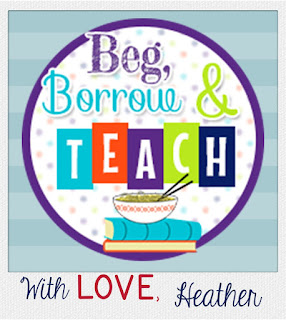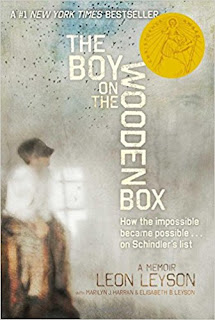Are you looking for some time-tested, evidence-based ways to enhance your classroom management? Would you like to be a leader, rather than a boss in your classroom? Then my post on how to be a classroom leader is for you!
This is the third post in my Classroom Management Series. If you missed it, be sure to check out the previous posts:
Teaching Expectations After the Year has Started
This is the third post in my Classroom Management Series. If you missed it, be sure to check out the previous posts:
Teaching Expectations After the Year has Started
Consistency is Key
Be consistent with rules across the board. If there's one thing a middle-schooler can spot, it is inequity in how rules are applied. Students like to see consistency and fairness. Students like structure. Enforcing rules doesn't make you mean. Two things that I want students know: I care about them and I mean business.
Some things I'm consistent about:
- Don't start any directions or activities until every student is quiet and has eyes on you.
- Before letting them touch any materials, review expectations or directions. This even applies to tests.
- Don't be afraid to completely stop everything if you feel like it is spiraling out of control. Sometimes a few minutes of silent reflection as a class is all that's needed for everyone to return to the task at hand with fresh eyes.
Even Though Consistency is Key, It is OKAY (even wise) to start over with your expectations if things aren't going well.
The advice I gave in my post about Teaching Expectations After the Year has Started was to start over after the new quarter begins.You may want to start by writing down procedural expectations for things like turning in papers, using supplies, etc. If you've already written these expectations down, review them and make sure they are still working for you and the class.
Review Expectations Often
Quickly reviewing your classroom expectations before your class is expected to work independently on something will help students who are auditory learners. Also, reviewing expectations often, especially after holiday breaks, is a key to success.
Try Some Professional Development
Leaning and reflecting will make you a better teacher almost instantly. Ask your administration if you can get coverage for your classroom so you can go into some well-run classrooms to observe and take notes. I love learning from teachers who just seem to flawlessly execute classroom management!
It's important to remember: The fact that you are asking for help shows great courage and desire to be a good teacher.
Build Relationships With Students
- Write down their birthdays
- Talk to students and remember details about their life. Ask them about it the next day!
- Smile at them and chat with them whenever possible (in the hallway, in the lunch room, etc.).
Target Problem Students... in a Good Way
Try the 2x10 activity- Pick out a student with whom you are struggling. Find 2 minutes to chat with them in the day about nothing class-related. Do this for 10 days in a row. It be awkward at first, but by the 3rd or 4th day, they will look for you and look forward to it. After 10 days, choose another student.
I believe this is the single, most important thing you must do to be an effective teacher. It doesn't take much...anything to show you care. Make sure you try hardest with the most difficult students. They are the ones that need it the most! Be sincere and be interested in them.
Relax a Little
I am a Type A person and have to rein it in. Decide which behavioral expectations must stay and which do not matter. The fewer things you hold fast to, the easier it may be for students to live up to your expectations and not feel like they are being micromanaged.
Let them know you’re approachable and down to earth. Show them a sense of humor by being able to laugh with them.
Have Something for Students to be Doing From the Moment They Walk in the Door
It establishes the tone and expectation for the class, as well as getting students to think about the curriculum. Every day in my classroom, there is a numbered list on the screen the second the students walk into the room. As students trickle in, they immediately begin to complete the list, which almost always starts with filling out their agenda. As I take attendance and check homework, they are engaged in completing the list.
Alternatives to the itemized list (all posted on the board for the students as they arrive):
- A bellringer
- Daily review question
- Entrance ticket
Join me next time, when I'll be continuing my Classroom Management Series with a complicated issue: Restroom Usage Policy.

















































